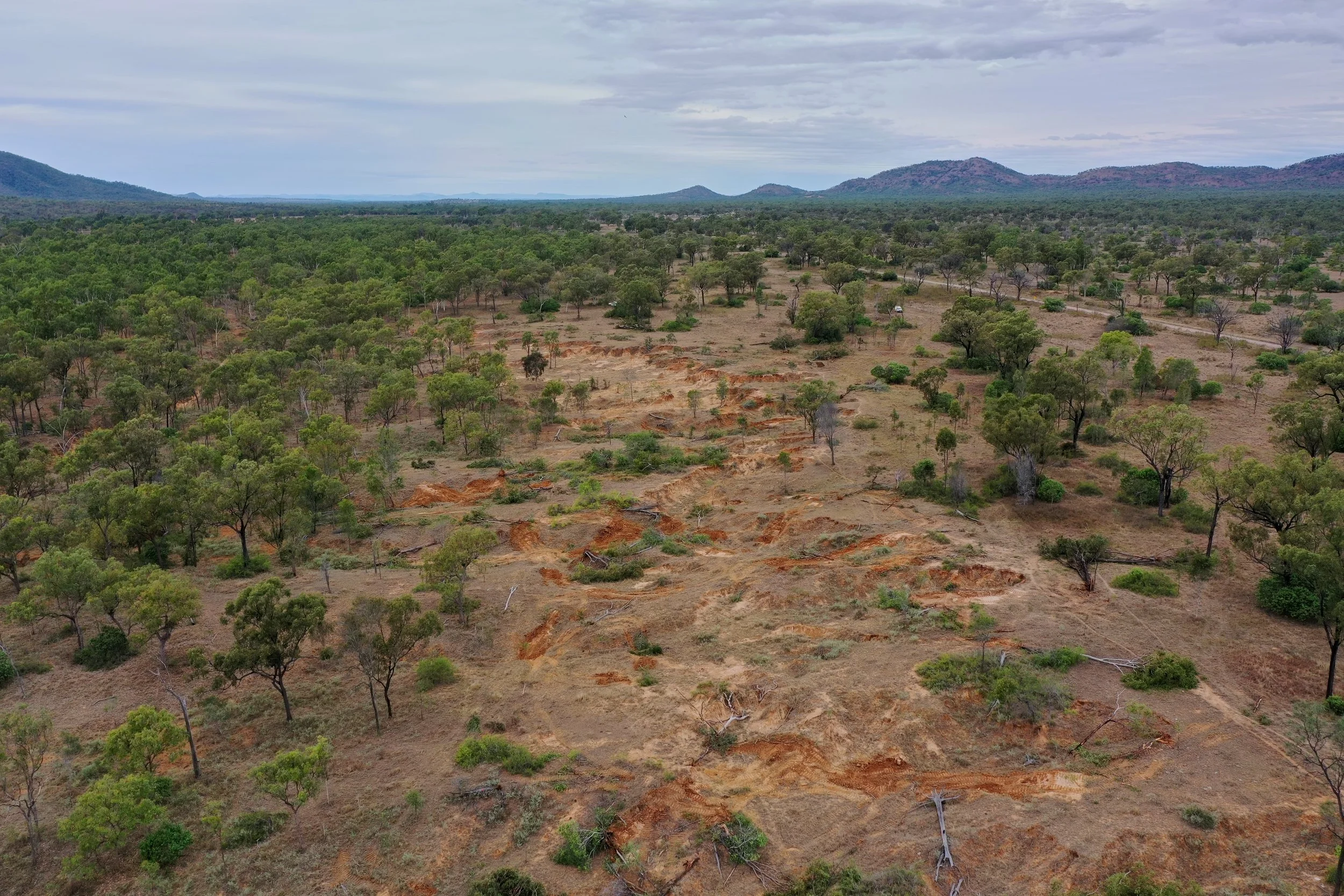Bowen Gully Rehabilitation Project: A Foundational Reef Credit Project
Queensland’s Bowen River catchment has the dubious honour of being home to some of the highest sediment loads entering the Great Barrier Reef. But now, a groundbreaking project aims to help change that by setting a new benchmark for privately funded gully repair.
A section of the gully before major repair work started.
Operating under the Reef Credits Gully Method, the Bowen Gully Rehabilitation Project, completed construction in September, and has the potential to reduce sediment load to the Great Barrier Reef by up to 500 tonnes per year. Verterra Ecological Engineering delivered the project, leveraging its deep expertise in land rehabilitation and soil amelioration to deliver a solution that will transform the eroded landscape and help safeguard the future of the Great Barrier Reef.
Why It Matters
The Bowen, Broken, Bogie (BBB) catchment system is a major source of fine sediment runoff to the Great Barrier Reef. These sediments reduce light availability and smother coral, while nutrients and other pollutants attached to sediments also contribute to degrading marine ecosystems. Addressing sediment at the source - particularly from unstable gullies - is critical to protecting reef health and improving water quality.
This project, situated approximately 60km west of Collinsville, is more than just a one-off repair. It is a proof of concept for how ecological engineering, paired with environmental markets, can drive long-term outcomes for both land and sea. By demonstrating measurable and verifiable reductions in sediment and rewarding those outcomes with market-based funding, the hope is that this project can become a blueprint for landholders and investors to mobilise and reduce sediment across the region at a scale never seen before.
Rock chutes help prevent erosion by reducing velocity of rain flow. This image shows one of the chutes before rocks are added.
On-Ground Works
Rehabilitation began in late July and was completed in September. The work included a range of activities that will deliver a restored resilient landscape:
Headcut Rock Chute Construction
A stabilising rock chute at the gully head halts upslope migration of erosion. Two overland flow bunds direct water safely into the chute, reducing the impact of concentrated flow during heavy rain.In-Channel Grade Control
Four additional rock chutes were installed along the gully to control gradient, prevent second-incision erosion, and reduce velocity of flow during rain events.Scarp Reshaping
A 300-metre-long erosion scarp is being reshaped using cut-and-fill techniques to form stable batters which reduce future erosion risk and prepare the land for revegetation.Soil Amelioration & Revegetation
The 15.2-hectare site, comprises of highly sodic soils, which leads to poor soil structure, reduced water infiltration and increased runoff. Improving the health of the soil and reducing sodicity is essential to ensure a long-term outcome. Verterra’s soil scientists devised a tailored solution using gypsum, organic matter, and fertiliser. Following this, a specialist seed-mix comprising endemic grasses and legumes was seeded and protected with hay mulch to retain moisture and reduce erosion. This not only prevents future sediment flow to the Reef but also restores productive pasture to the grazing operation.
Example of a completed rock chute on site.
A Model for Future Reef Credit Projects
As the first gully rehabilitation project in Australia to be registered under the Reef Credit Methodology, this work will set the standard for crediting projects, demonstrating the commercial viability of sediment reduction through nature-based solutions.
It provides a blueprint for:
Scaling erosion control across high-risk catchments
Unlocking private investment for ecosystem repair
Supporting graziers and landholders to participate in environmental markets
Improving productivity and land condition while delivering downstream water quality outcomes
By integrating robust scientific approaches to land rehabilitation, verified sediment reduction, and market-driven funding, this project could exemplify a new model for land stewardship in the Reef catchment.
Hay is spread over the rehabilitated site to help establish new vegetation over the rehabilitated site.
What’s Next?
As the project site transitions into its monitoring phase, sediment reductions will be quantified and verified, before they are submitted to Reef Credit scheme administrator Eco-Markets Australia for crediting—enabling investors and landholders to share in the environmental and economic value created.
Verterra is proud to play a leading role in advancing the Reef Credit market and delivering projects that generate tangible, measurable benefits for Queensland’s landscapes, agriculture operations, and the Great Barrier Reef.
Contact us to find out how you can participate in or deliver a Reef Credit project.




